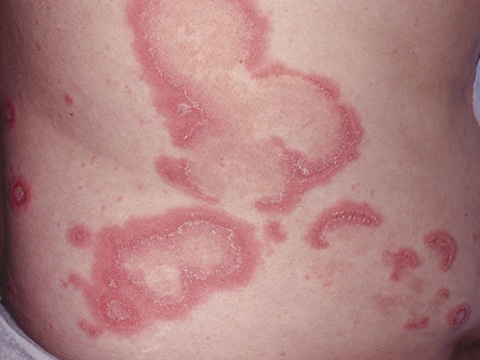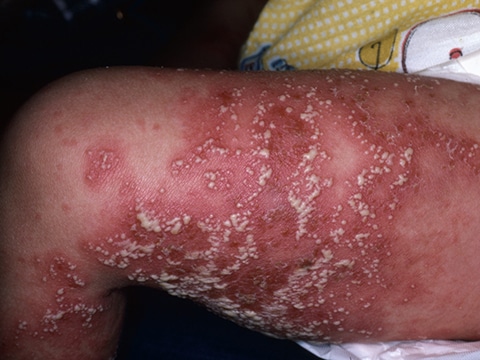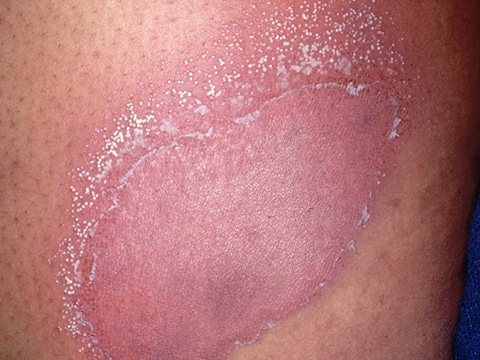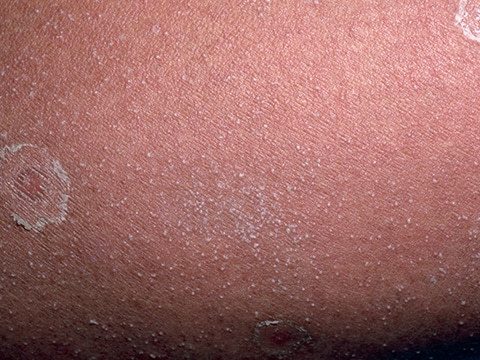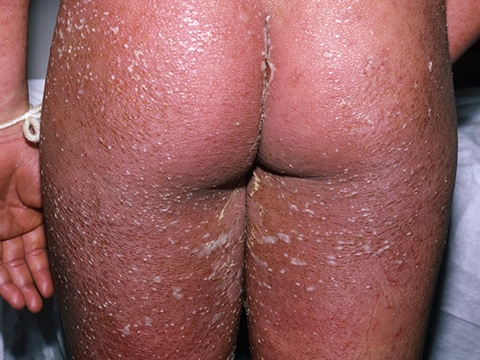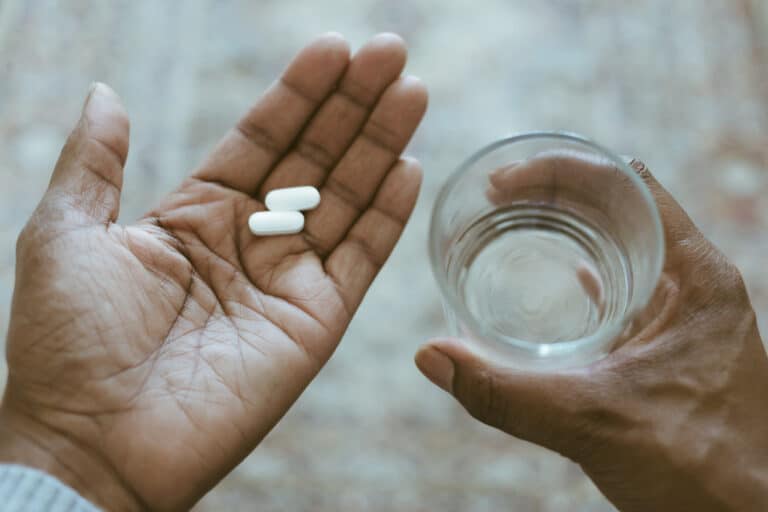Large areas of redness and tiny pustules on the buttocks in a person with GPP.
An image of GPP showing a collection of pustules within red, irritated skin on the elbow.
Patients with GPP commonly have large areas of redness with white pustules that become a yellow crust after rupture.
A common presentation of GPP on the trunk, where lesions have a curved or circular pattern with pustules at the edges.
The leg of a patient with classical GPP characterized by prominent pustules within red, irritated skin.
Red, scaly patches of skin with tiny pustules located along the edge of the redness in a patient with GPP.
Tiny pustules and background redness with some larger scaly lesions in a patient with GPP.
Severe GPP, with peeling of the skin and widespread pustules that aggregate and form larger areas known as "lakes of pus."
Large areas of redness and tiny pustules on the buttocks in a person with GPP.
An image of GPP showing a collection of pustules within red, irritated skin on the elbow.
Patients with GPP commonly have large areas of redness with white pustules that become a yellow crust after rupture.
A common presentation of GPP on the trunk, where lesions have a curved or circular pattern with pustules at the edges.
The leg of a patient with classical GPP characterized by prominent pustules within red, irritated skin.
Red, scaly patches of skin with tiny pustules located along the edge of the redness in a patient with GPP.
Tiny pustules and background redness with some larger scaly lesions in a patient with GPP.
Severe GPP, with peeling of the skin and widespread pustules that aggregate and form larger areas known as "lakes of pus."
Severe GPP, with peeling of the skin and widespread pustules that aggregate and form larger areas known as "lakes of pus."
Tiny pustules and background redness with some larger scaly lesions in a patient with GPP.
Red, scaly patches of skin with tiny pustules located along the edge of the redness in a patient with GPP.
The leg of a patient with classical GPP characterized by prominent pustules within red, irritated skin.
A common presentation of GPP on the trunk, where lesions have a curved or circular pattern with pustules at the edges.
Patients with GPP commonly have large areas of redness with white pustules that become a yellow crust after rupture.
An image of GPP showing a collection of pustules within red, irritated skin on the elbow.
Large areas of redness and tiny pustules on the buttocks in a person with GPP.
Large areas of redness and tiny pustules on the buttocks in a person with GPP.
An image of GPP showing a collection of pustules within red, irritated skin on the elbow.
Patients with GPP commonly have large areas of redness with white pustules that become a yellow crust after rupture.
A common presentation of GPP on the trunk, where lesions have a curved or circular pattern with pustules at the edges.
The leg of a patient with classical GPP characterized by prominent pustules within red, irritated skin.
Red, scaly patches of skin with tiny pustules located along the edge of the redness in a patient with GPP.
Tiny pustules and background redness with some larger scaly lesions in a patient with GPP.
Severe GPP, with peeling of the skin and widespread pustules that aggregate and form larger areas known as "lakes of pus."
Images of (32)
Generalized Pustular Psoriasis
Psoriasis is a noncontagious, lifelong skin condition that affects about 2–3% of the population of the United States. People with psoriasis have thickened, red, and often scaly patches on their skin. Psoriasis is very likely to run in families, but it can also be triggered by certain situations, such as emotional stress, injury to the skin, infection, as well as taking certain medications. The exact cause of psoriasis is unknown, but it seems to be caused by errors in how the immune system functions.
Read More
Join the Skinsight Community
Sign-Up for our quarterly E-Newsletter
Sign up →




